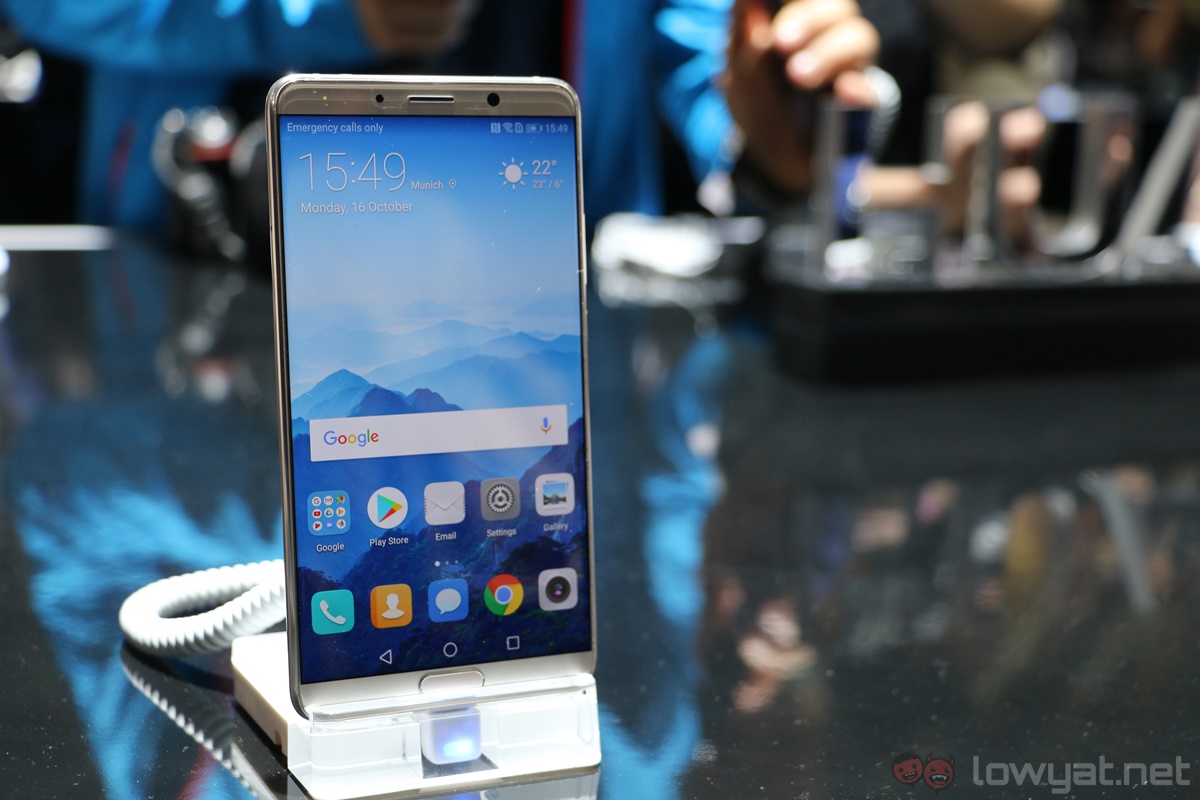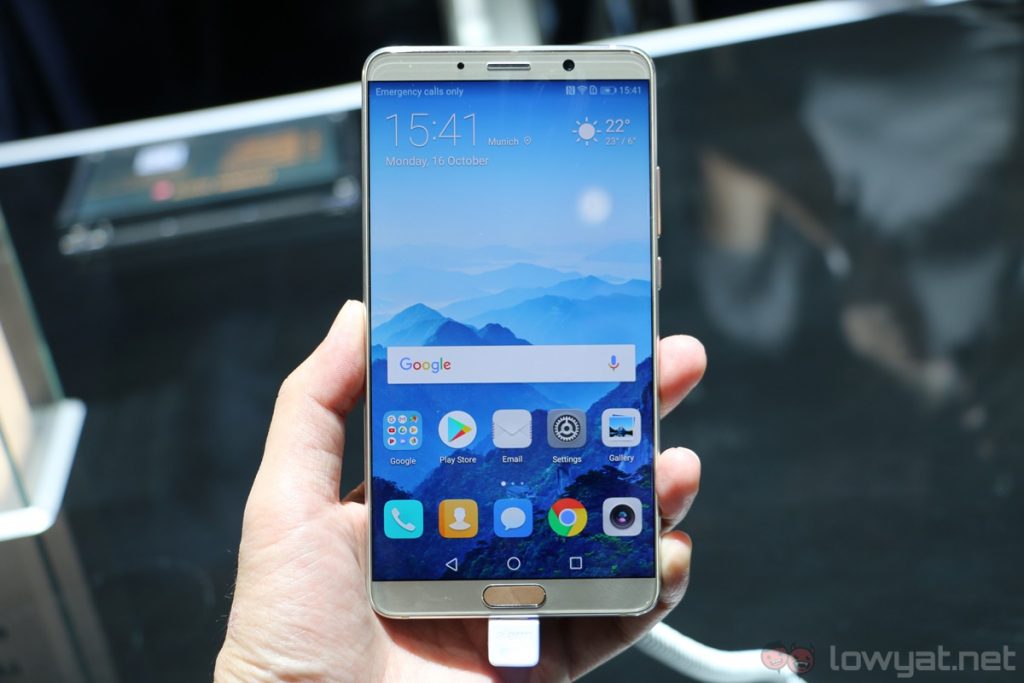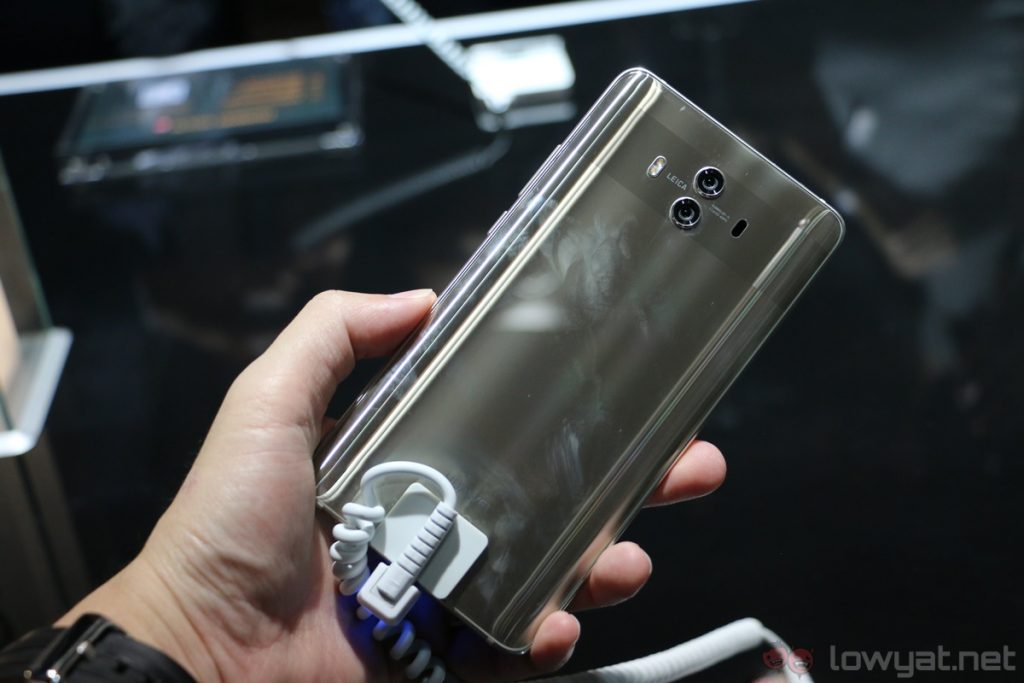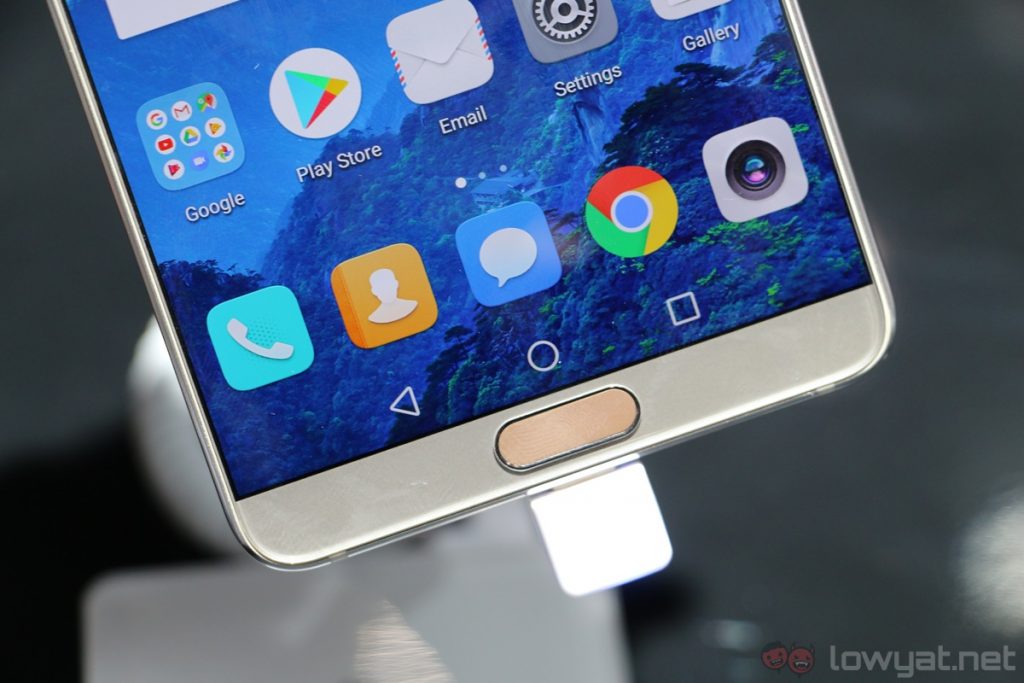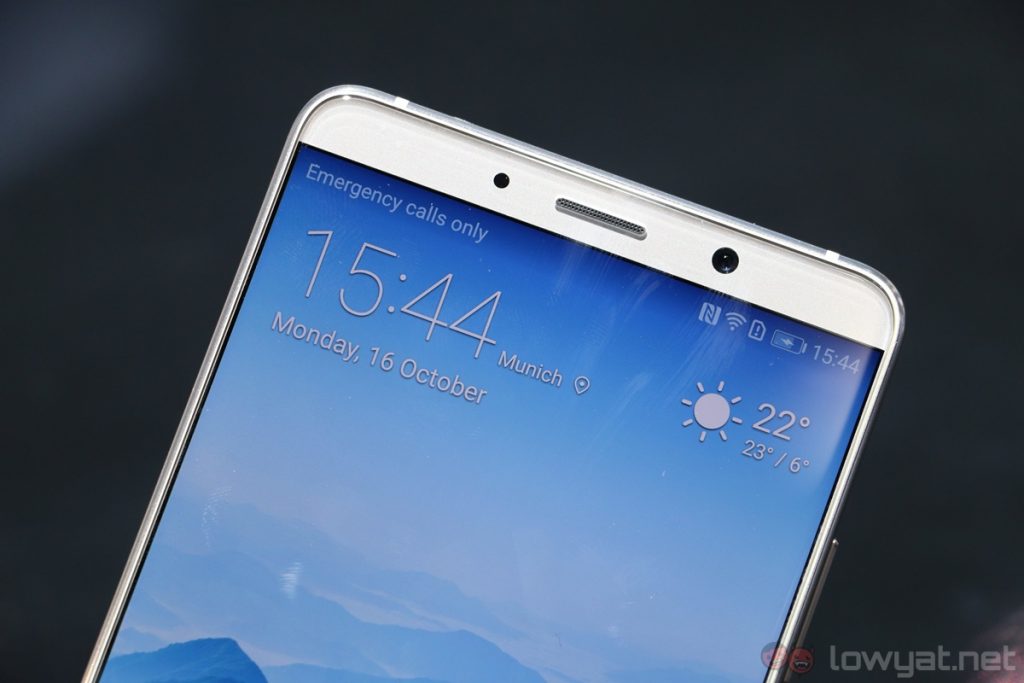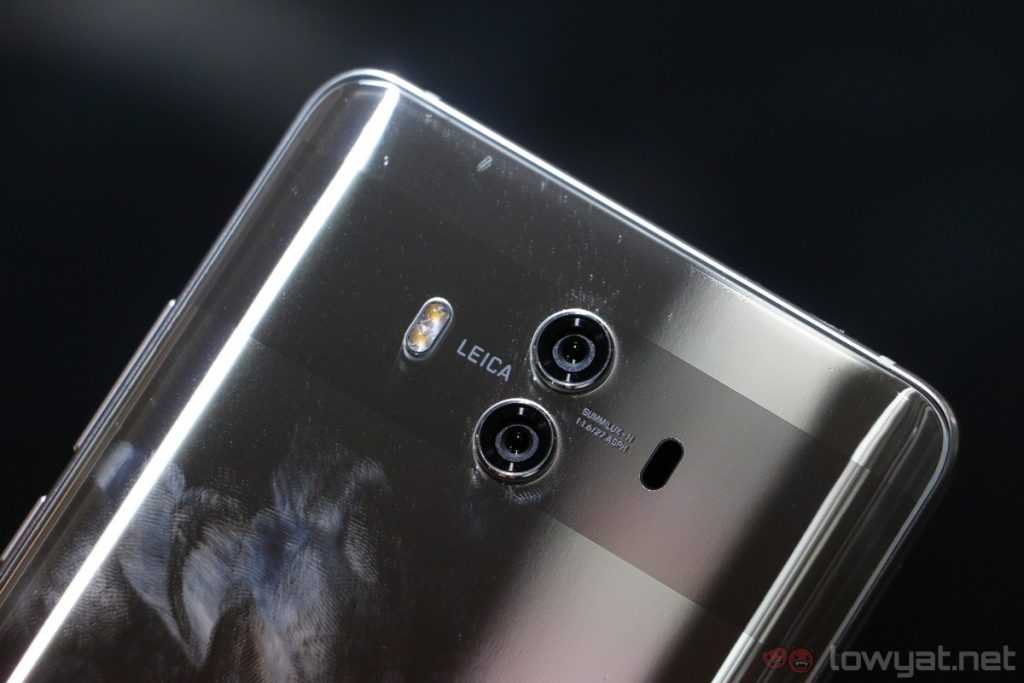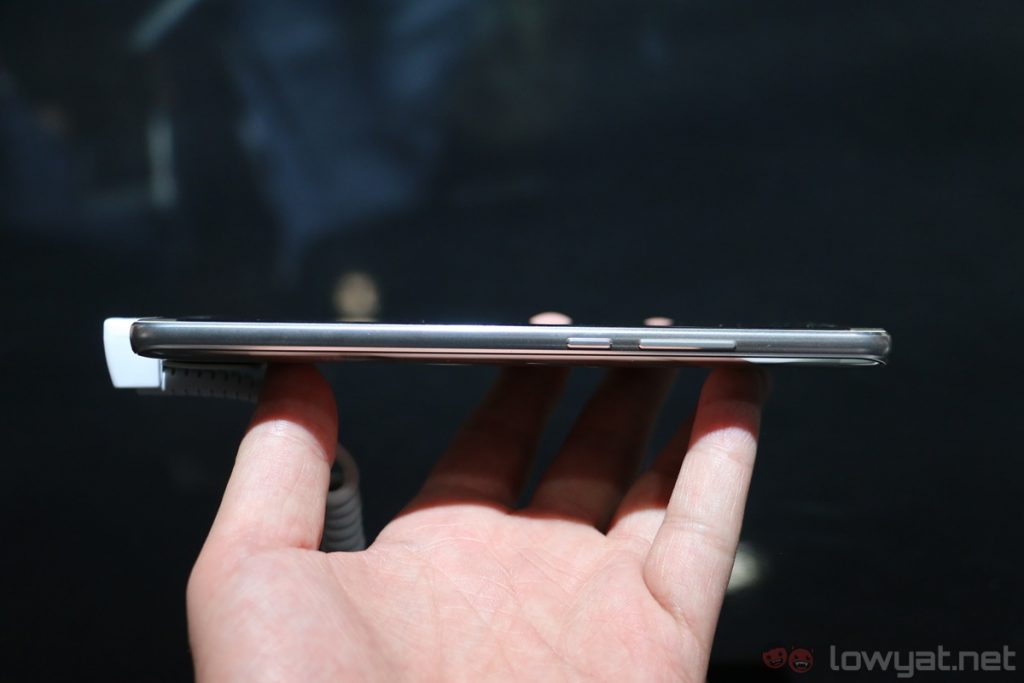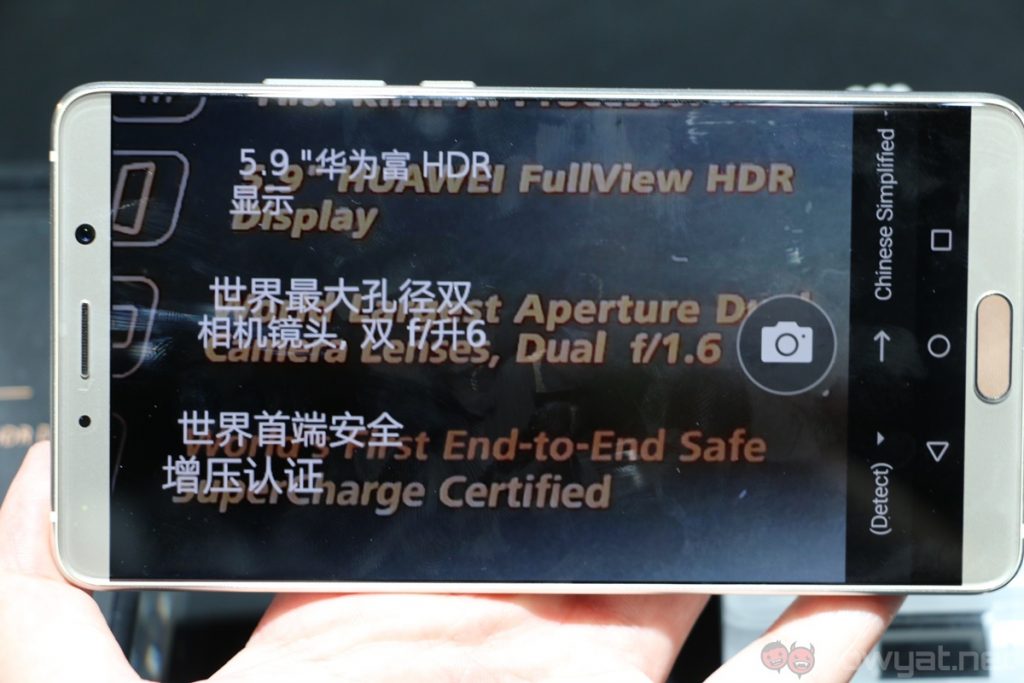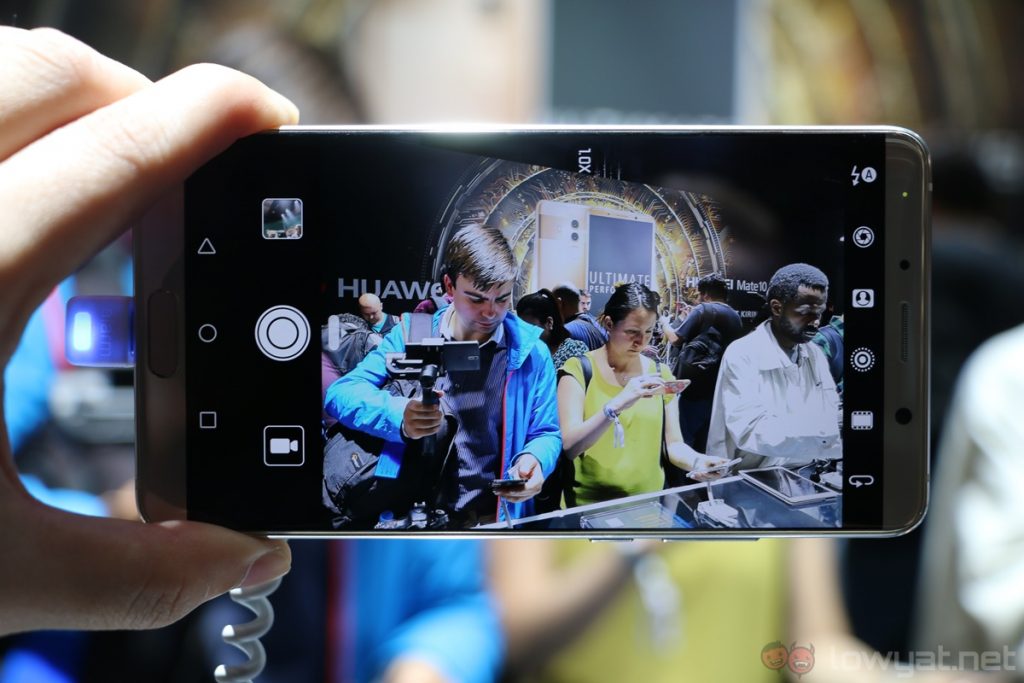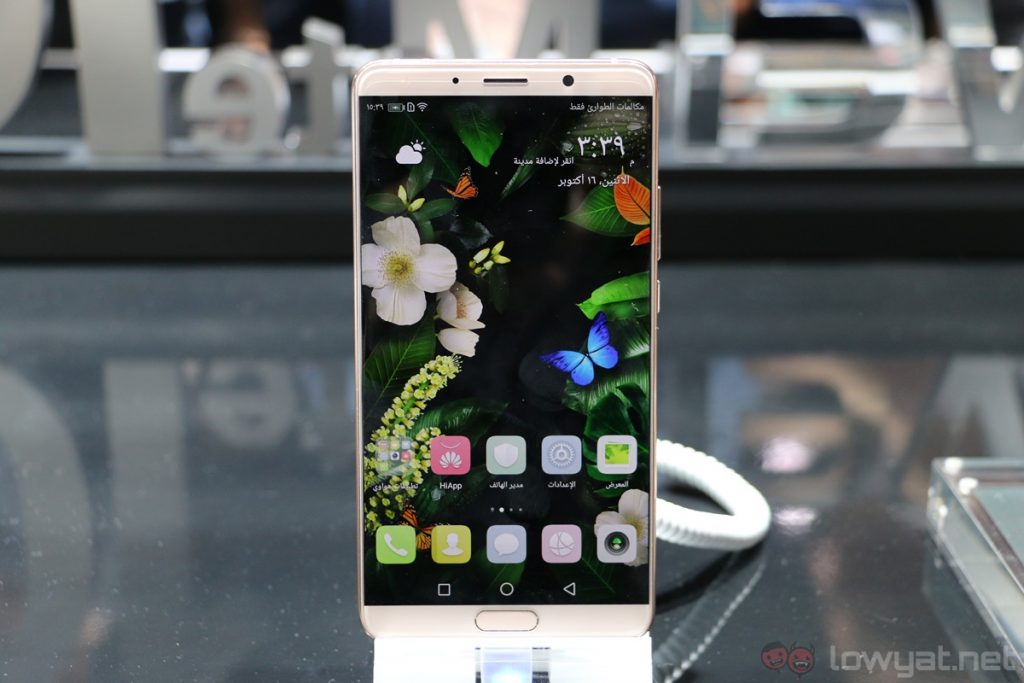The Huawei Mate 10, while impressive, isn’t quite as exciting as the sleek Huawei Mate 10 Pro. This isn’t exactly a bad thing, of course: both devices are catered to different consumers, and the Mate 10 continues to emphasise on the strengths of Huawei’s Mate series.
On top of that, the standard Mate 10 also boasts a number of features not found on the more premium Mate 10 Pro; some of which are indispensable to certain users.
Let’s talk about specifications: the Mate 10 features a 5.9-inch 2560 x 1440 RGBW HDR display with a conventional 16:9 aspect ratio, a Kirin 970 processor paired with 4GB of RAM, 64GB of internal storage further expandable with a microSD card, as well as a generous 4,000mAh battery. The Mate 10 also boasts the same Leica-certified dual-camera system as the Pro model.
As the Mate 10 comes with a standard 16:9 display, it feels chunkier and bigger than its Pro variant, which comes with a taller and narrower display. Needless to say, the Mate 10 is not a small device – it has a large 5.9-inch display, after all – but it is more compact than its predecessor, thanks to the very minimal top and bottom bezels.
Not only do they reduce the overall footprint of the Mate 10, the small bezels also give the device a modern aesthetic. Much like the Mate 10 Pro, the Mate 10’s good screen-to-body ratio at 81.79% is also enough for Huawei to categorise the phone’s display as a FullView Display.
So how good is the Mate 10’s 5.9-inch 1440p display? Very. Sure, some may not be thrilled by the fact that it is an RGBW display – it produces a “tile-patterned image” when viewed up close – but it looks more than adequate when viewed at a normal distance. It can get quite bright, texts and images look sharp, and with support for HDR10, colours are vibrant too.
Build quality, needless to say, is also very solid. Unlike its predecessor, the Mate 10 now boasts a glass and metal construction, which makes it much more comfortable to use for long periods of time. On top of that, it also gives the device a more premium look, though the back glass panel does attract fingerprints rather easily.
Beyond the display and feel in hand, the Mate 10 software experience is pleasant too. Navigating through the phone’s user interface feels very responsive and zippy, and by utilising the NPU (Neural Processing Unit) of the Kirin 970 chipset, the Mate 10 can perform offline text and image translation faster. Now, these are all done with the Microsoft Translator app, so it’s not exactly a feature exclusive to the Mate 10, but the NPU does speed things up quite a bit; Huawei claims the NPU provides up to 300% increase in performance.
In my testing, the Mate 10 was able to translate an image of a spec sheet I took at the launch event in about five seconds or so. While this is quite an impressive feat, I’ll definitely test this feature more thoroughly in a full review. It’ll be interesting to see just how much faster the Mate 10 is at translating images and texts compared to smartphones without an NPU.
Camera performance of the Mate 10, on the other hand, is largely similar to the Mate 10 Pro. After all, both smartphones are equipped with a similar dual-camera setup, which is made up of a 12MP RGB sensor and a 20MP monochrome sensor with large f/1.6 lenses on both of them. The primary 12MP RGB shooter also comes with optical image stabilisation, and on the front, the Mate 10 features an 8MP shooter.
Naturally, the Mate 10 can take some really good-looking shots, but as mentioned in my hands on of the Pro model, the camera app isn’t quite as responsive as I would’ve liked. Nonetheless, autofocus speeds are very good, and the Mate 10’s dual-camera system just holds a lot of promises.
The Huawei Mate 10 isn’t a sexy, sleek flagship smartphone like the Mate 10 Pro. Instead, it’s the practical, no-nonsense Mate device consumers know and love. It features a large display, support for expandable storage, and a 3.5mm headphone jack – the latter two features are not even found on the Pro model.
To top it off, Huawei is pricing the Mate 10 at the very same price point as its predecessor at RM2,699; that’s pretty good price-to-performance ratio. Of course, it’s not as sleek-looking nor does it carry an IP67 rating like the Mate 10 Pro, but if you value the Mate 10’s feature set (microSD card slot, 3.5mm headphone jack, among others), it’s really quite a compelling flagship smartphone.
Follow us on Instagram, Facebook, Twitter or Telegram for more updates and breaking news.


